Automotive history is a broad subject that includes science, engineering, racing, and wonderful technological breakthroughs.
Over the last 130 years, considering its relatively humble beginnings the evolution of the automobile has progressed to pretty astonishing levels. It’s usually difficult to fully grasp the changes that have occurred from our modern perspective, but recently I attended an incredible event that unknowingly provided a detailed look into the history of the passenger car: the inaugural Atlanta Concours d’Elegance.

Inaugural Atlanta Concours d’Elegance 2016
You may know concours d’elegance events as glamorous occurrences featuring some of the most expensive historic cars in existence from all different eras of motoring history. These are events such as the Richard Mille Arts & Elégance in Chantilly, France and the Pebble Beach Concours d’Elegance (see Pebble Beach Classic Car Week 2014: The Enthusiast Collector Goes To Car Heaven and A Touch Of Switzerland In Pebble Beach: Hispano-Suiza And Rolex).
It also happens to be a fantastic place to witness first-hand the evolution of the automobile from its humble beginnings to the most recent and advanced cars on road and track. And the Atlanta Concours d’Elegance was no exception: it was full of history, a history told by the cars themselves and the passion and dedication of the people behind them.

Vintage Corvettes at the 2016 Atlanta Concours d’Elegance
Since it was the first year of the event, it didn’t have the same aura of glitz and spectacle as some concours mainstays like Pebble Beach or the granddaddy of them all, Villa d’Este in Lake Como, Italy (see Villa d’Este Concorso d’Eleganza And A. Lange & Söhne: Time For Legends).
It did however feature an amazing array of cars, many of which I had never seen before in the metal. Having been an avid car enthusiast since I was young, I have spent many Saturdays walking through rows and rows of classic cars. And since I grew up in the U.S. Midwest, most of what I have seen revolves around American classics and hardcore muscle cars. Exotic Ferraris and historical Mercedes have thus far only been dreams on a poster.
So while the Atlanta Concours d’Elegance has some big shoes to fill, the inaugural outing was a fast success. Counting the driver-level cars from the first day and the assembly of concours-level cars on the second day, there were more than 170 spectacular vehicles in attendance.
The cars were placed into 19 different categories, with three special “exhibition” classes for vehicles that didn’t qualify for the concours but deserved recognition nonetheless.

“Barn Find” Jaguar XK 120 before restoration at the 2016 Atlanta Concours d’Elegance
The “Barn Finds” exhibition category constituted a crowd favorite and comprised makes and models of the same vintage as those in the concours, but on the other end of the restoration timeline. A fantastic example was the Jaguar XK 120 pictured above about to be restored after having been found languishing.
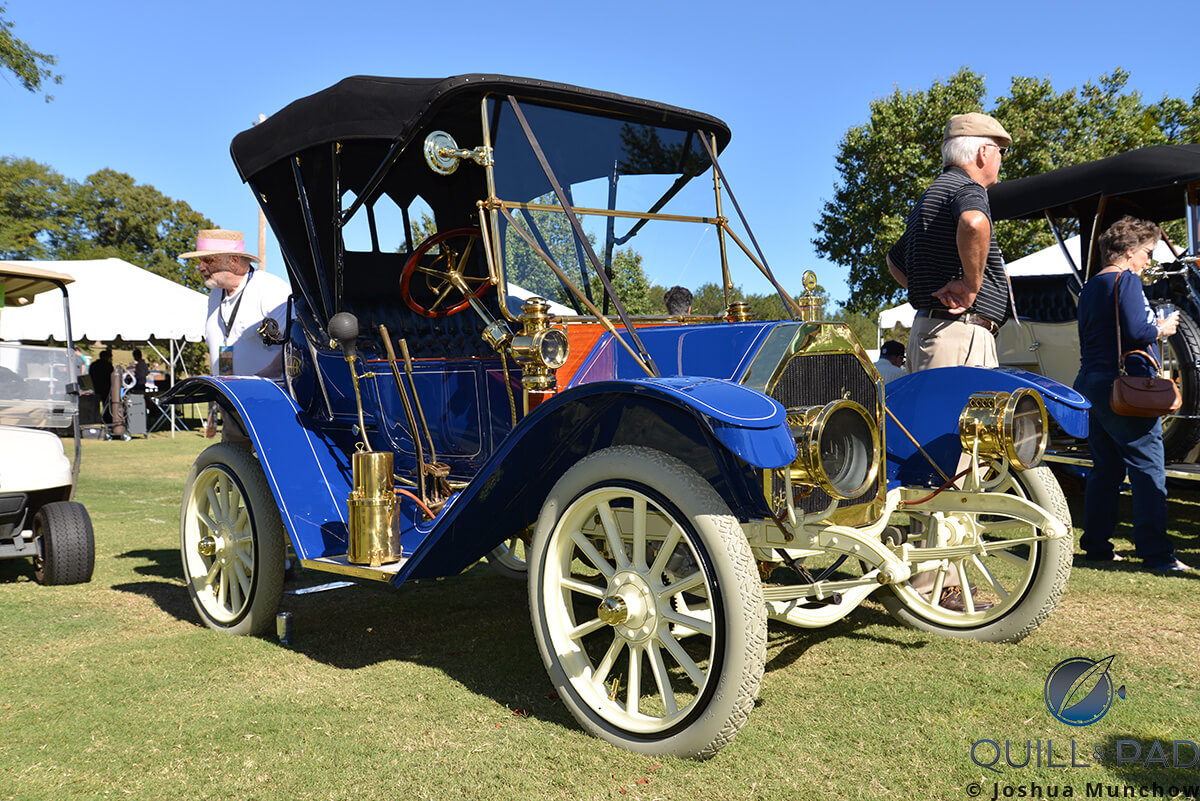
Brass-era Buick at the 2016 Atlanta Concours d’Elegance
But a “junky” Jaguar did not make for the reason to go: that reason was on display in the rolling hills of the Château Élan Winery and Resort. Beginning with cars from the Brass Era (approximately 1896-1919) and moving up through history until 1972, and with a special Panoz category encompassing modern cars, the concours d’elegance had a little bit of everything. One could easily see the evolution of driver’s compartments, engine configurations, suspension designs, and every detail of bodywork and shape.

Modern cars in the special Panoz category at the 2016 Atlanta Concours d’Elegance
Automotive evolution
Here, it was easy to notice how things like mirrors, seatbelts, and wheels made from things other than wood arrived much later than one might expect. Bodies transformed from wood panels to simple metal shapes to beautifully shaped metal curves until almost any shape became part of the experiment.

Doesn’t this bring back memories? Dashboard of a Pontiac Silver Streak at the 2016 Atlanta Concours d’Elegance
Engines began to get more complicated as time went by, a clear sign that the internal combustion engine was slowly being perfected.
Some might argue that the internal combustion engine reached its peak elegance in the middle of the twentieth century with such examples as the Ferrari V12 found in the 250 GTO and GTE.
While I won’t meddle in that debate, it is undoubtedly clear that the vehicles were simply amazing.

Pierce Arrow, a pre-World War II American classic at the 2016 Atlanta Concours d’Elegance
The event also saw pre-World War II American classics like the Pierce Arrow, Lincoln K-Series, and Chevrolet Confederate just yards away from British sports cars such as the Jaguar XK 140 and Austin Healey 3000 MKIII.
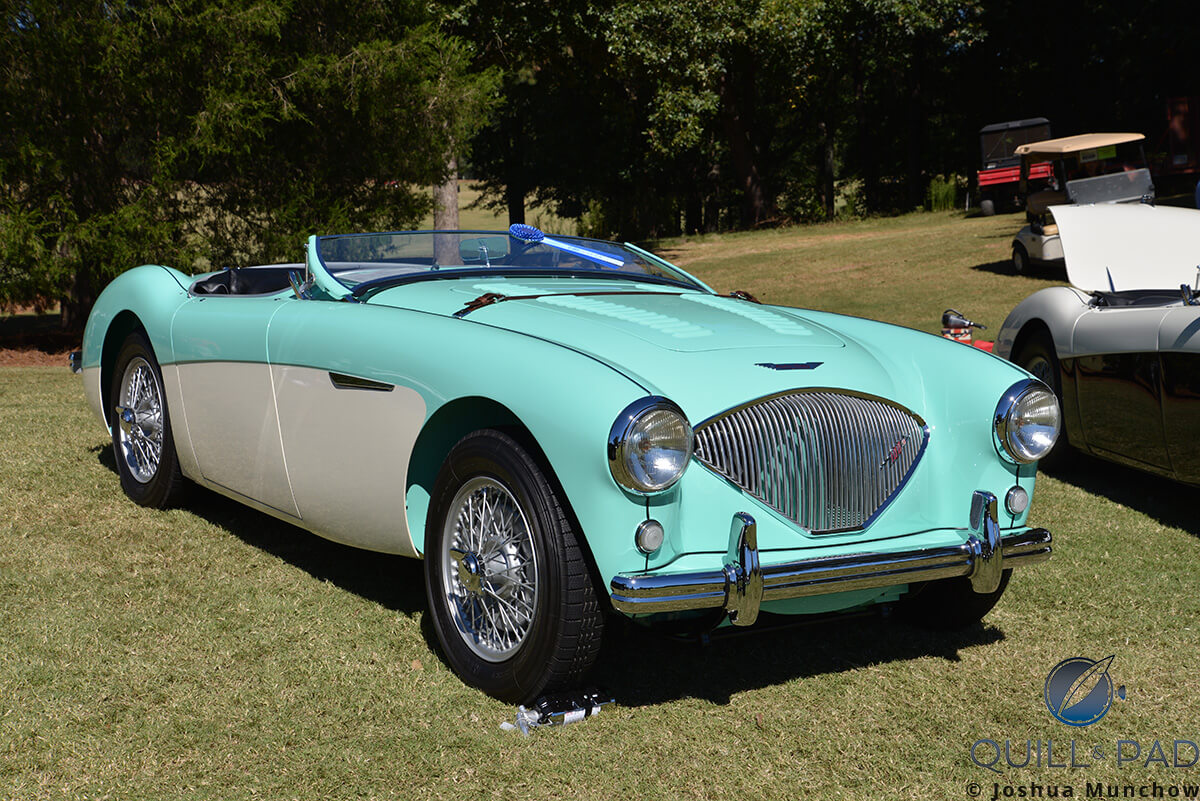
Austin Healey 3000 MKIII at the 2016 Atlanta Concours d’Elegance
There were German masterpieces like the Mercedes-Benz 300SL and the BMW M1 just across from fantastic Ferraris like the 365 GT, 330 GT, and 250 GTE.

Mercedes-Benz 300SL at the 2016 Atlanta Concours d’Elegance
Nothing was more paradoxical than seeing the giant Chrysler Imperial parked a few trees away from the diminutive BMW Isetta 600. The variety was impressive, even when considering the number of Porsche, Ferrari, Mercedes, and Jaguar models in attendance.
No matter what type of automotive enthusiast you were, there was something for you there, even steam-powered carriages, Italian supercars, American muscle cars, full-fledged racecars, pre-war classics, and modern luxury.
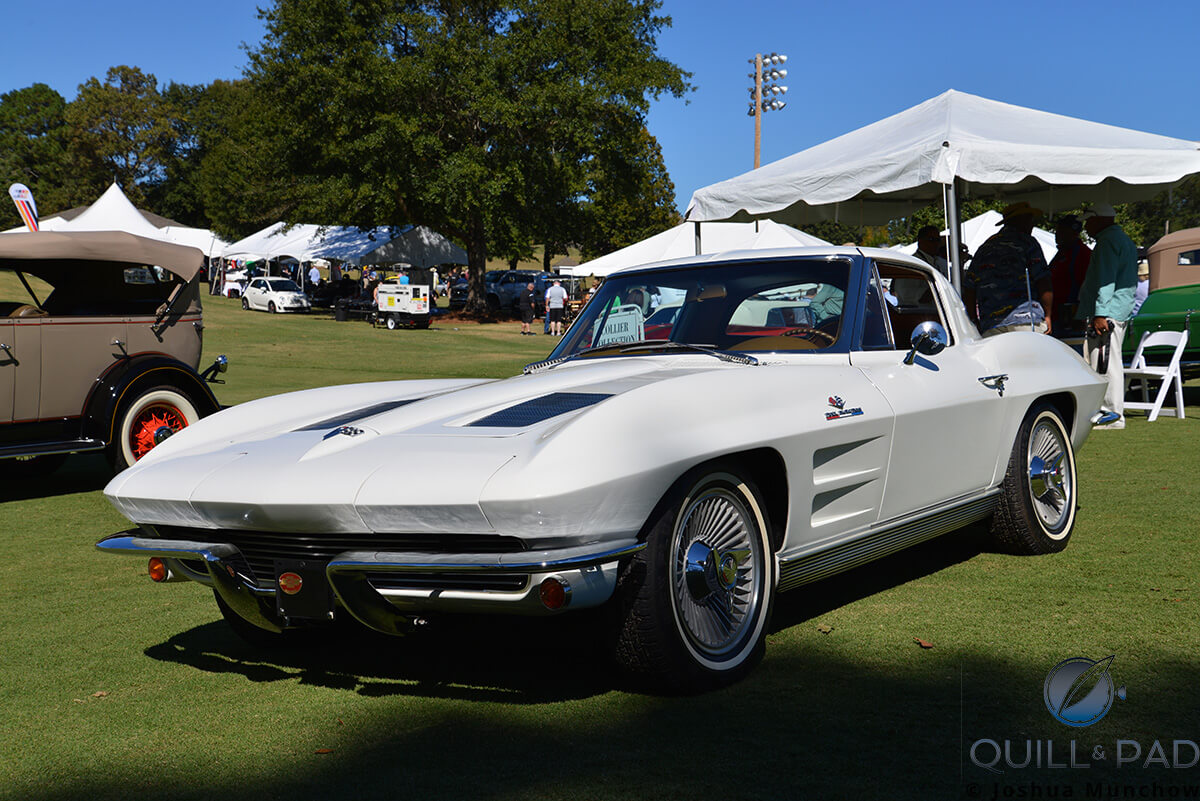
An American muscle car, the Chevrolet Corvette Stingray Coupe C2, at the 2016 Atlanta Concours d’Elegance
Oh, and there was even one immaculately restored Japanese car, an incredible Datsun 240Z, aka the Fairlady Z. Of course, I had a soft spot for this one, given my proclivity for all things Japanese as you might remember from Why I Bought It: Vintage JDM Seiko 7002 Diver (Plus A Same-Vintage Honda Beat.
Aside from the amazing concours cars, many luxury car brands showed up with current models available for “Ride & Drives” including Rolls-Royce, Ferrari, Aston Martin, Porsche, Lamborghini, and the Atlanta Concours d’Elegance’s main sponsor Panoz.

Realistically difficult racing simulator at the 2016 Atlanta Concours d’Elegance
The brands also brought a variety of racecars like the famous Panoz DeltaWing. Local racing track Atlanta Motorsports Park even brought a racing simulator loaded with a digital version of the track that attendees could test their skills on. The digital Nissan GT-R was not very driver friendly and I will admit that when I tried, the car and I, when combined with the difficult layout of the AMP track, spent a lot of time in the wall.
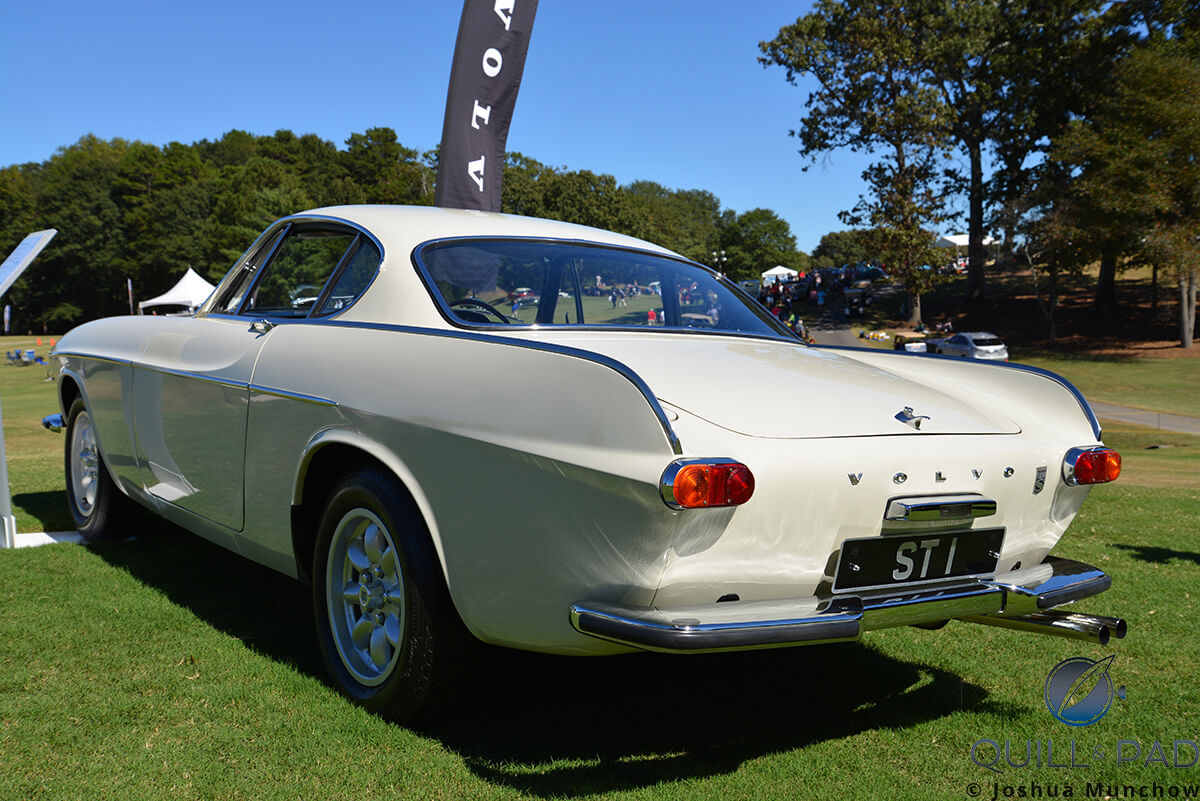
The Volvo P1800S driven by Roger Moore in the TV show “The Saint” from 1967 to 1969 at the 2016 Atlanta Concours d’Elegance
There was even a television show car on hand: the Volvo P1800S is one of my favorite classic European cars, and the Volvo in attendance was driven by Roger Moore in the TV show “The Saint” from 1967 to 1969. The lines on this car are intensely beautiful and showcase subtlety and proportion that is rarely seen. In my own personal opinion, I would hold this car up as one of the most underrated classic cars in existence.
The vibe
The event was buzzing all day; hundreds of people were inspecting cars and exploring the beauty of automotive engineering. There were even automotive celebrities to be seen as I spotted renowned Porsche guru Magnus Walker posing with a Bentley representative. Moments similar to this were repeated as people posed with the cars, their owners, or both.
But eventually it was time for those who had brought their immaculate cars to be judged by the car gods . . . in other words, the show judges. Each category found a winner, which seemed nearly impossible given the absolutely flawless condition of so many competing vehicles from Jaguar, Cadillac, Mercedes, Ferrari, Maserati, Porsche, BMW, Austin Healey, and Corvette.
After the categories had been awarded, it was on to the best of the best. Out of all those that had just taken top honors in their categories, who would take home Best of Show? Since cars built before World War II and cars built after the Great War are so very different, there would be two Best of Show winners, one for pre-war and one for post-war, with one of these cars winning Best of Show overall.

Extremely rare 1961 Maserati 3500 GT Frua prototype at the 2016 Atlanta Concours d’Elegance
Best of Show post-war was none other than a magical 1961 Maserati 3500 GT Frua prototype owned by Elton Stephens. This Frua prototype is one of only two in existence; it was recently valued at well over $1 million, winning its class at the Amelia Island Concours d’Elegance.
The car is simply amazing, the shape and lines of the body are subtle yet sensual, and the color is perfection. The details in the grill, fender louvers, hood scoop, and body panel joints remind us that design needn’t require a cacophony of angles, corners, and materials to make something look fast, elegant, and intentional. It really is a truly beautiful car.
But wait, there’s more!
Next up was Best of Show pre-war, and this is where we enter a world of unimaginable devotion to an automobile. The winner was a perfectly restored 1909 Rolls-Royce Silver Ghost owned by Denean Stafford III.

1909 Rolls-Royce Silver Ghost is Best of Show at the 2016 Atlanta Concours d’Elegance
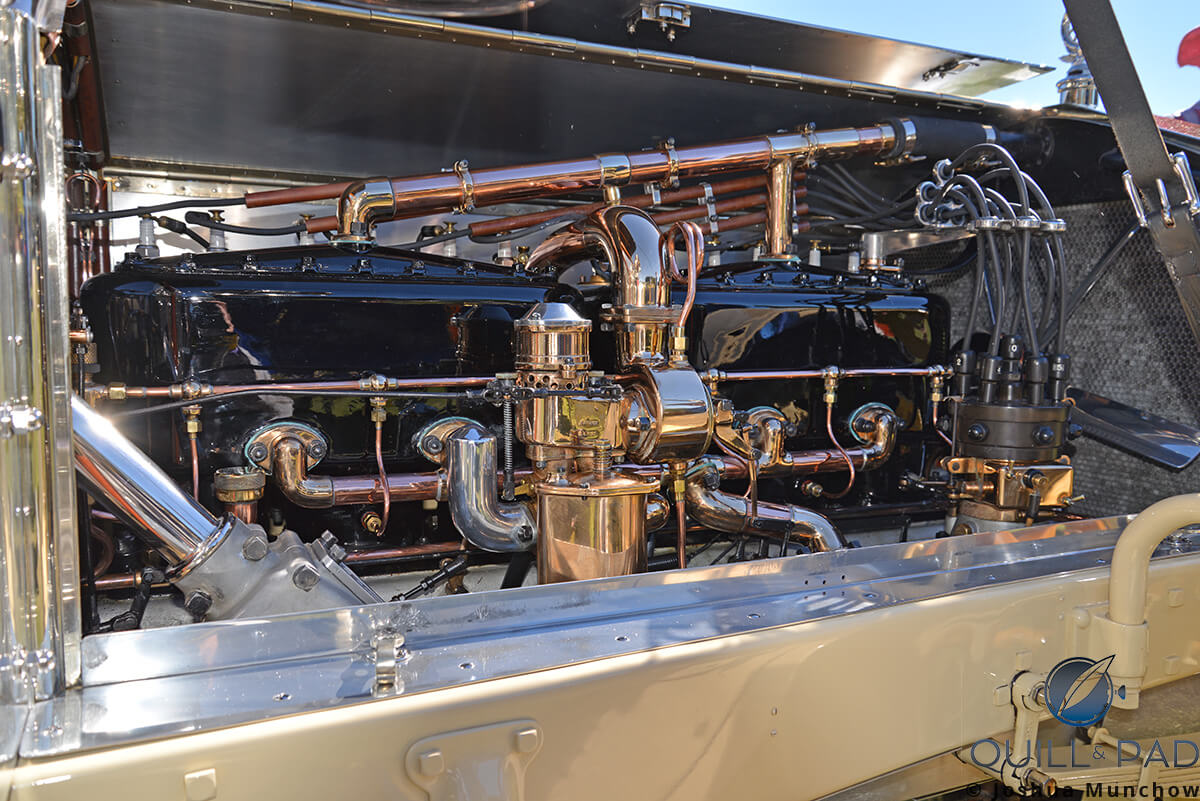
Steampunk before steampunk: a 7-liter straight 6 producing 48 hp powers the winning 1909 Rolls-Royce Silver Ghost of the inaugural Atlanta Concours d’Elegance
The 1909 Rolls-Royce Silver Ghost is an impressive machine that may seem unusual to most modern car enthusiasts because it sits squarely in the golden age of brass. Housing a 7-liter straight 6 that produces a whopping 48 horsepower, the open-air cab comfortably sits four in the utmost automobile luxury of the day. DeNean Stafford III, is a long time Silver Ghost collector who has owned 14 Rolls-Royce Silver Ghosts in search of the perfect one, of which he still retains three. This car had previously won its class at both the Amelia Island and Pebble Beach Concours d’Elegance competitions.

This 1909 Rolls-Royce Silver Ghost won Best of Show at the 2016 Atlanta Concours d’Elegance
The 1909 Rolls-Royce Silver Ghost had one other surprise for the crowd as it was named the overall Best of Show for the inaugural Atlanta Concours d’Elegance, a great and impressive honor for any enthusiast. The crowd loved the winners, and the cars paraded slowly and carefully in front of throngs of people. This was actually the most incredible part since I never thought I would see any of these vehicles, let alone hear them driving.
And, oh, they sounded good.
The inaugural edition proved to be a veritable smorgasbord of automotive delights. Having covered this concours also makes me itch to attend others and see what spectacular automobile history is hiding around the world. There was only one downside to the Atlanta Concours d’Elegance, and that was that it had to come to an end.
I didn’t even get to drive any of the cars. Oh, woe is me.
For more information, please visit www.atlantaconcours.org/inaugural-2016-atlanta-concours-delegance.
Leave a Reply
Want to join the discussion?Feel free to contribute!

Good article except for one glaring error. The Pebble Beach Concours is THE best; ask anyone who has participated in either. Lake Cuomo is wonderful but can only be considered second best.
I’ve been to both, and while I’ve enjoyed them equally I have heard very diverse opinions on which event is “better,” Bert. Most end up saying that the cars at Lake Como are really the creme de la creme.